This post may contain affiliate links. Please read our disclosure policy.
How to freeze green beans to maintain their color, flavor, and texture for months. Including how to freeze fresh vs. blanched green beans, top tips, and usage recommendations to enjoy year-round!
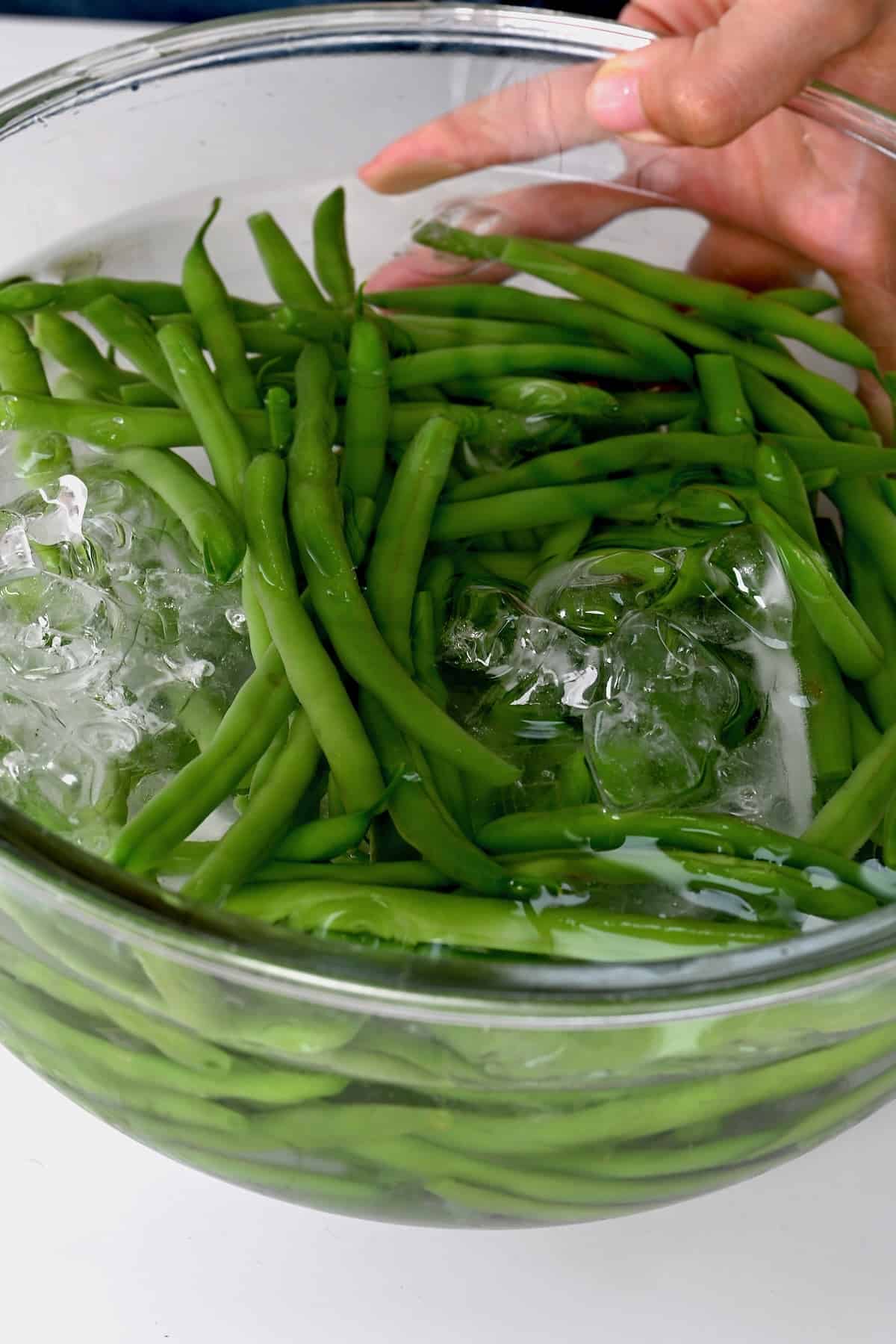
During summer, while green beans are in season, it’s the perfect time to boil green beans, sauté green beans, make roasted green beans, and air fry green beans to perfection. However, if you want to lock in that fresh flavor beyond their peak season – especially if you grow them in your garden or have a local farmers market- it’s time to learn how to freeze green beans (raw or blanch beans to freeze).
Not only is freezing fresh green beans incredibly simple, but it’s quick and excels at preserving the fresh flavor, color, and texture to enjoy for months. Meaning you can preserve green beans all year, then thaw and cook them whenever you want.
You might also enjoy learning how to freeze broccoli, how to freeze corn on the cob, how to cook and freeze kidney beans, and how to cook chickpeas!
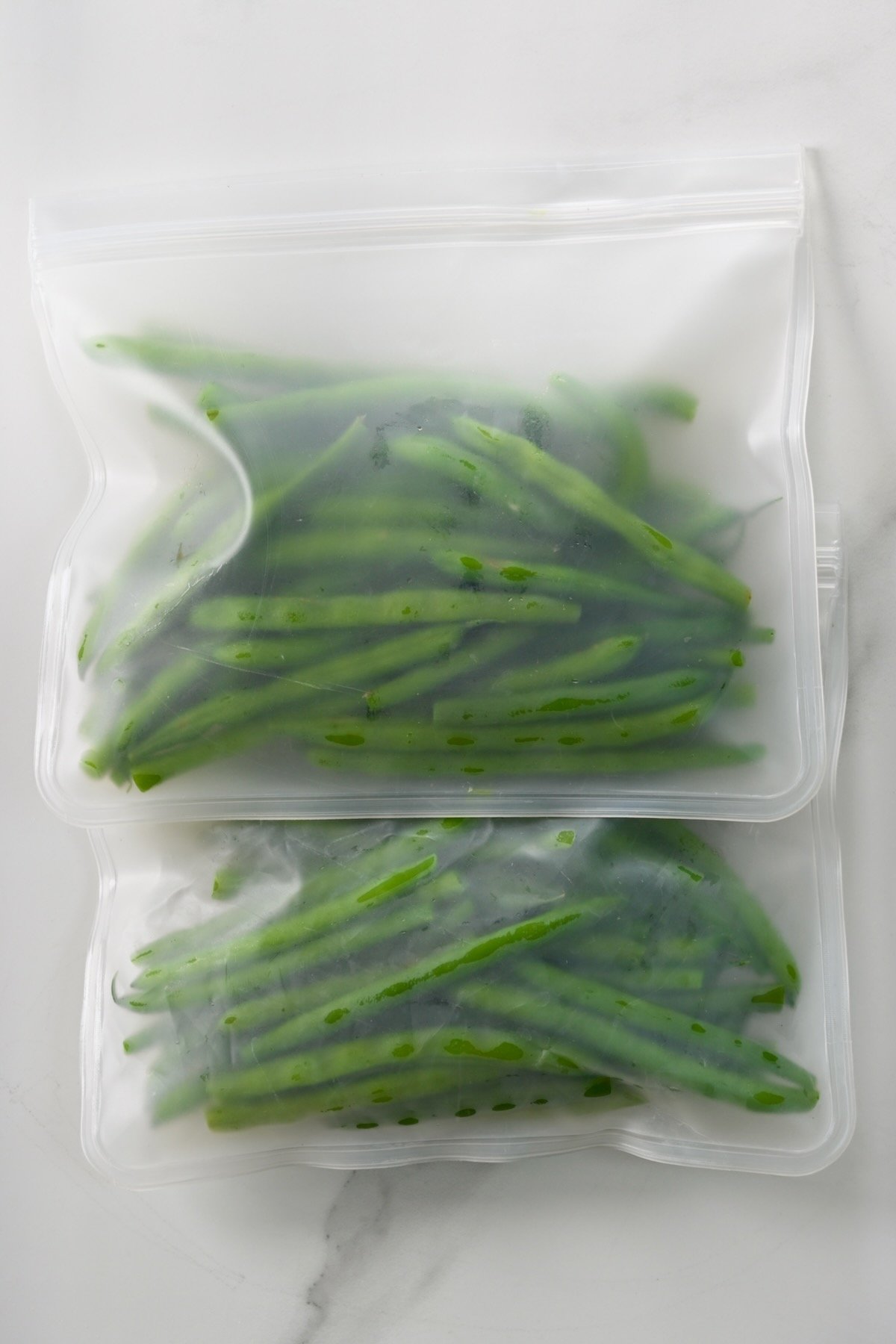
Want to save this recipe?
Table of Contents
Are green beans good for you
Green beans are a humble but nutritious addition to mains and side dishes. Not only are they a good source of fiber, but they also contain several micronutrients. These include Vitamins A, B6, C, and K, as well as folate, thiamin, iron, calcium, potassium, magnesium, manganese, etc.
To read more about the benefits of green beans, check out this article by Healthline.
Types of green beans
There are several green bean varieties and similar beans, such as purple string beans, runner beans (larger, flat green beans), white green beans, wax beans, and more. You can prepare and freeze most of them in a similar way, increasing or decreasing the blanching time based on their size.
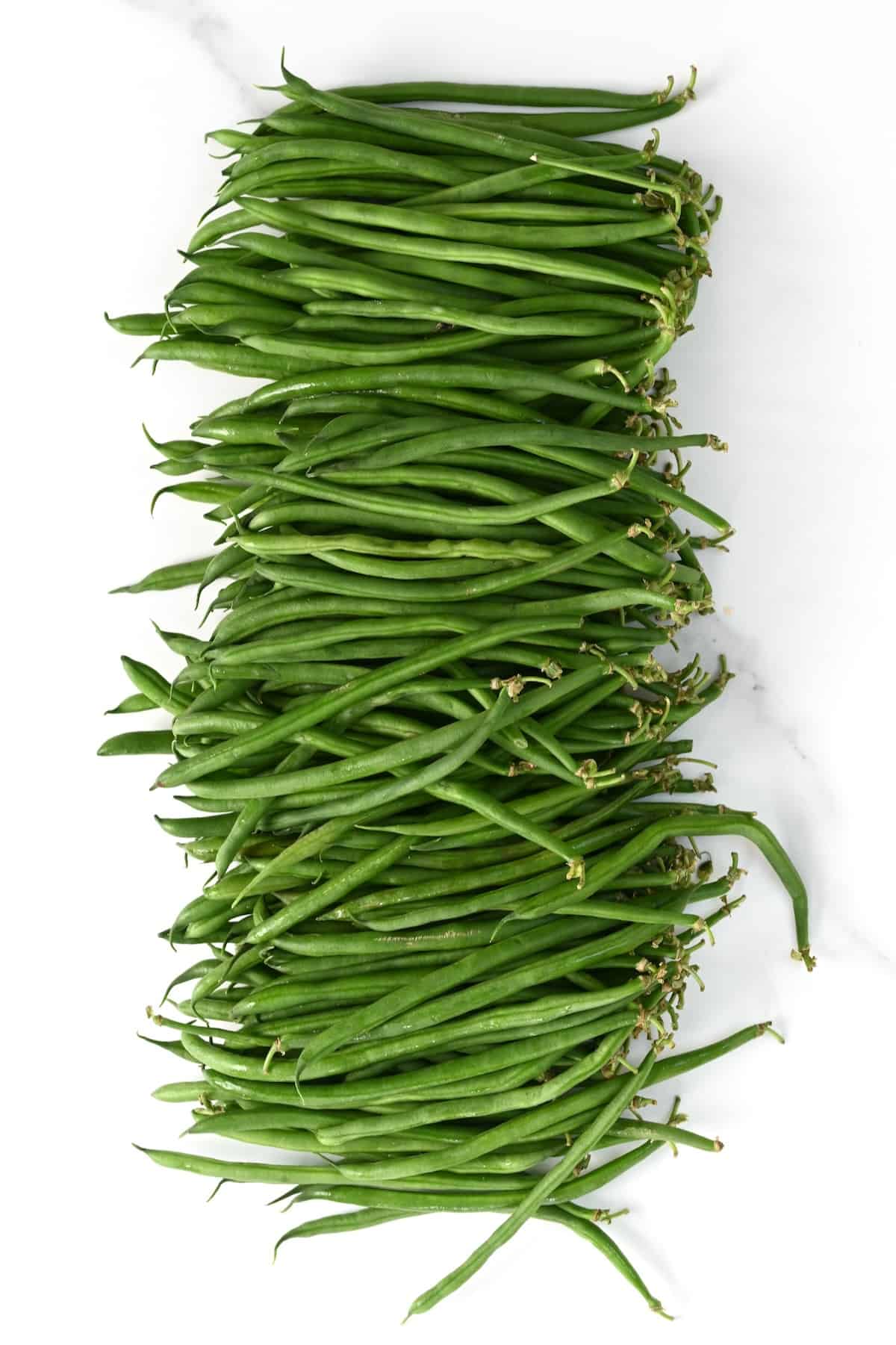
Green Beans Vs String Beans
Green beans and string beans refer to the same type of bean. String beans referred to the fibrous string that runs down the seam of each pod (similar to snap peas). This is largely outdated now and most don’t have strings anymore.
Green Beans Vs French Beans
While similar in look and flavor, several differences set these two types of beans apart. For example, French beans (also called Haricot Verts) are usually slightly longer and thinner. They also take less time to cook as they are essentially small green beans. They also have a slightly earthier flavor.
How to buy, prep, & cut green beans
The first step of freezing any fresh produce is to select the freshest options. For freezing green beans, look for:
- A bright green color. Avoid any which are yellowing or browning.
- A smooth skin, free from bumps, lumps, and wrinkles.
- Moisture – this is a sign of freshness and the best flavor.
- Their size shouldn’t be overly large, as this can mean they’re tough/stringy. Smaller pods are usually more tender.
- Firm pods that snap easily rather than bending (just test 1-2 from a batch).
Once you’ve selected the beans, you can store them in your crisper drawer for up to 4 days.
When you’re ready to cook (or freeze) green beans, first you need to prep them:
- First, rinse the beans in a colander.
- Then, grabbing a handful (10-15 pods), line up the stem ends and use a sharp knife to slice off the end (about 1/4-1/2 inch).
- Optionally turn over and repeat on the other side, though it’s not necessary.
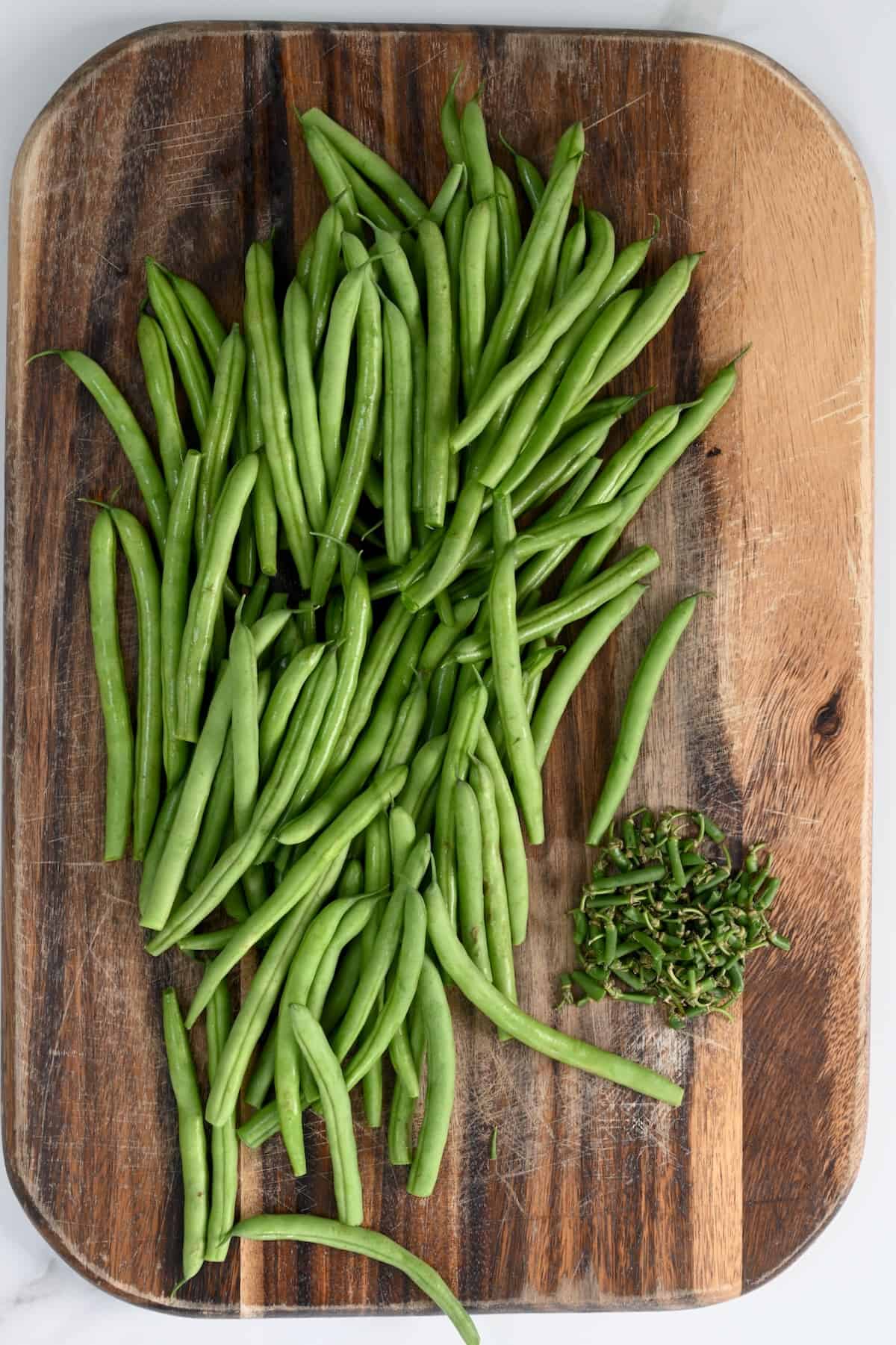
You could also cut them in half or thirds if you want smaller pieces. It’s up to you! I often freeze some whole and some in smaller pieces to use in different recipes.
How to blanch green beans
Blanching green beans for freezing is important for both color and texture. Plus, learning how to blanch green beans to freeze is super simple.
First, bring a large pot of water to a boil and add the salt.
Add the green beans to the boiling water, working in batches if necessary.
The pot size will depend on how much you plan to freeze. Likewise, you can adjust the amount of salt if you’re on a low-sodium diet. Generally, you’ll need around 1 gallon of water per 1 lb of vegetables.
How Long Do You Blanch Green Beans
Allow the beans to cook for just 2-3 minutes, until crisp-tender.
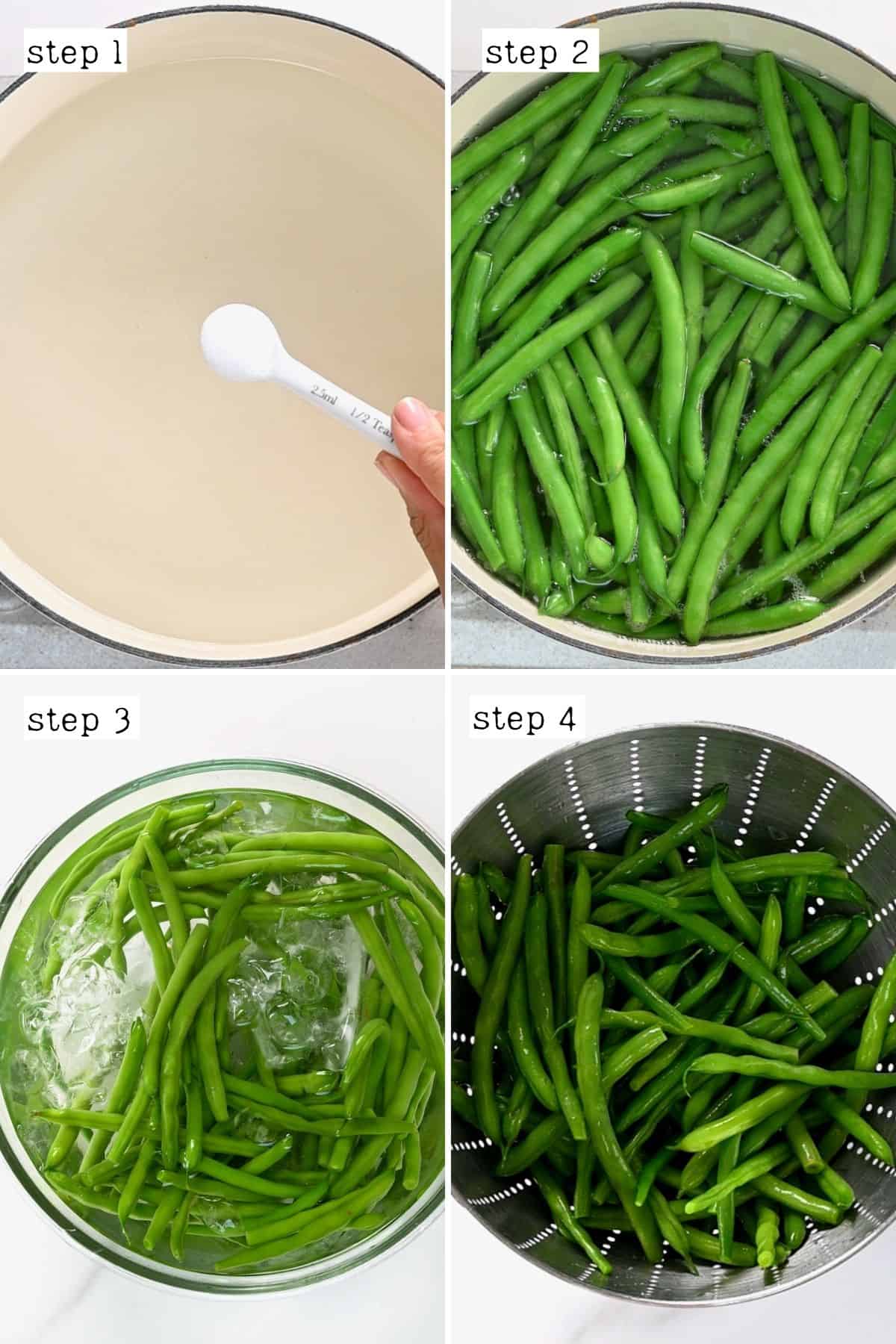
Then, use a slotted spoon (or drain them through a colander) to immediately transfer the blanched green beans to an ice bath (a large bowl of ice water) and allow them to cool for 4-6 minutes to stop the cooking process.
Finally, remove them from the water and pat dry with a kitchen towel or paper towel.
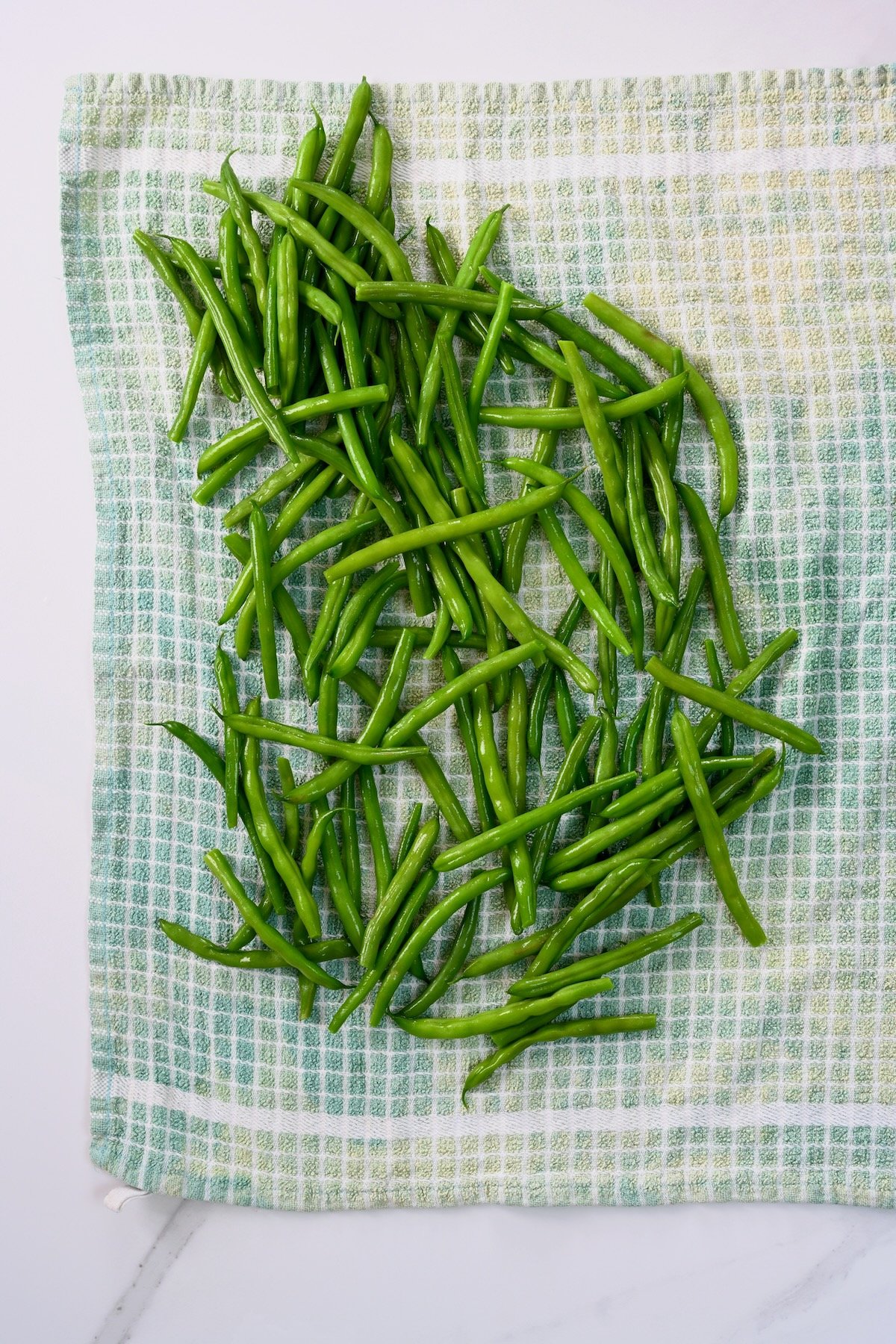
Alternative method: Instead of blanching green beans, you could steam them for 3-4 minutes.
How to freeze green beans
Freezing beans is simple. After prepping, blanching, and drying, there are just a couple of steps left for the best way to freeze green beans.
First, spread the blanched green beans on a freezer-safe baking sheet, rack, or board, ensuring they are in a single layer and not touching if possible. Then flash freeze the beans until solid (about an hour).
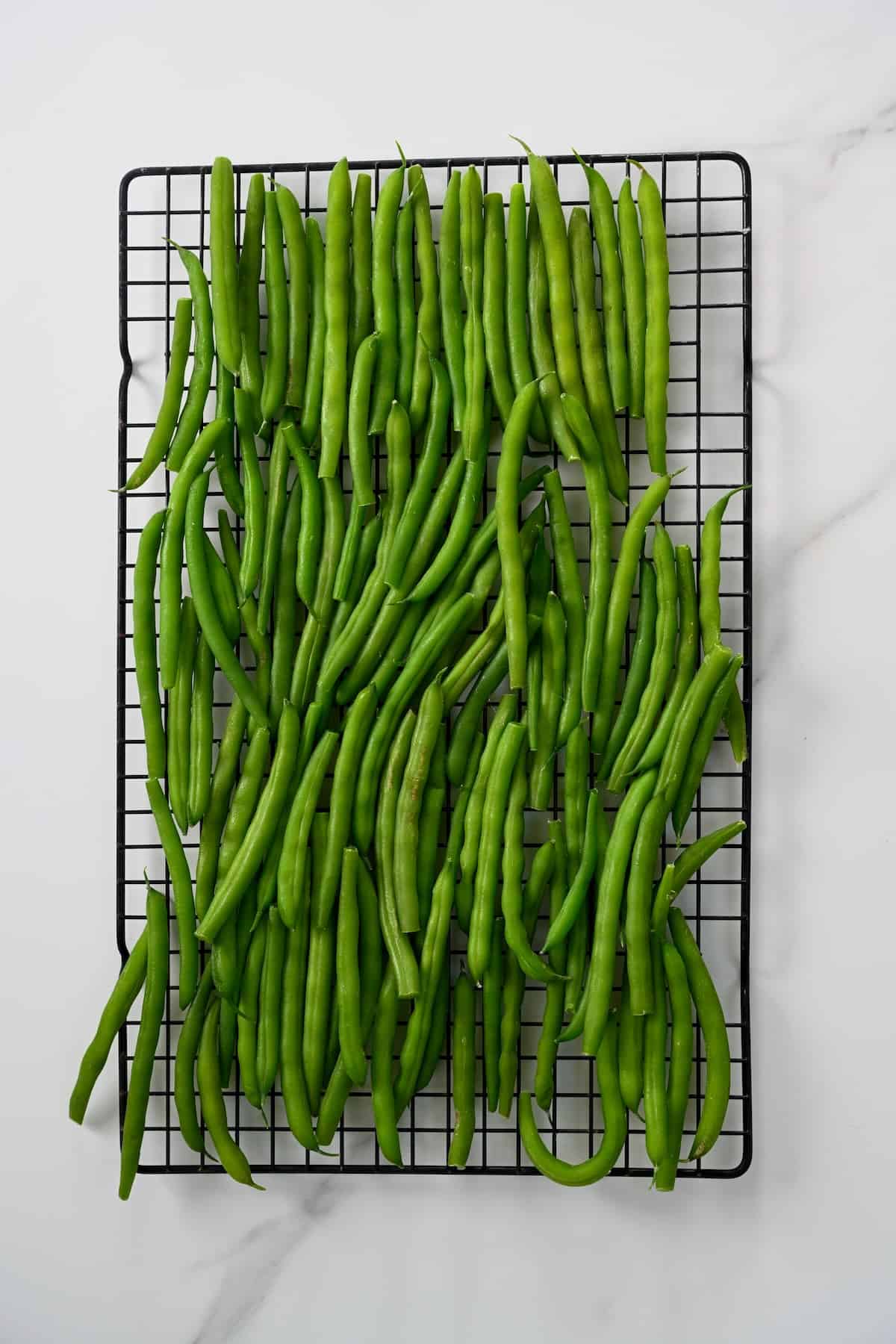
Then transfer the freezing green beans to a freezer-safe Ziplock bag, remove as much air as possible (did you know you can suck it out with a straw for a mock “vacuum pack” effect), and return to the freezer.
How long can you freeze green beans for
I recommend storing the blanched and frozen green beans for between 10-12 months, though for the best taste and texture eat them within 8 months.
Ensure they’re in an airtight environment to avoid freezer burn and maintain the longest shelf life.
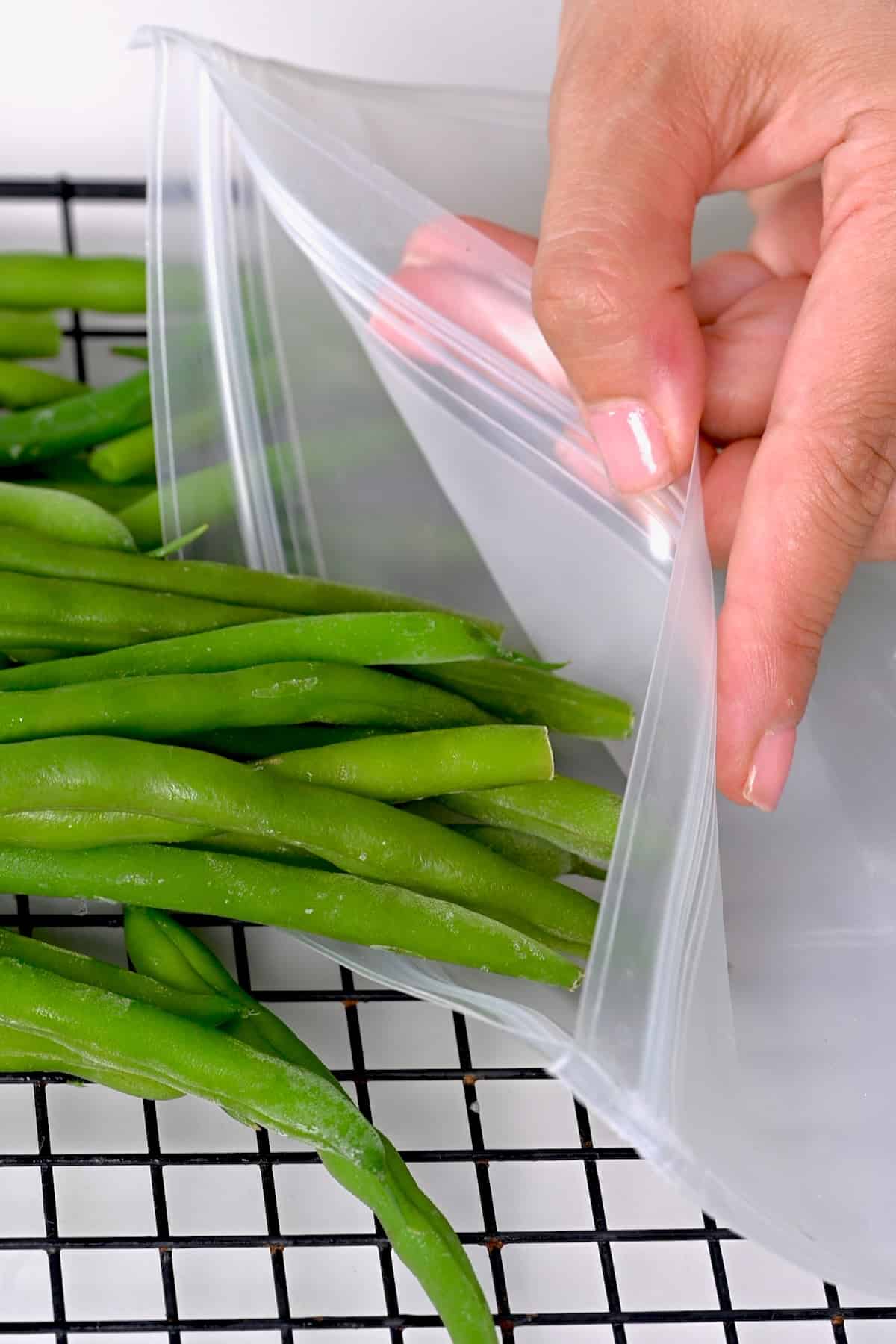
Do I need to thaw frozen green beans before using them?
The short answer is no, but the long answer is that it depends. When adding frozen green beans to dishes like soups, stews, stir-fries, curries, and other saucy dishes, you can usually cook them straight from frozen. Make sure to reduce their cooking time by 3 minutes (since they’ve been blanched).
You can also roast (including making green bean casserole), air fry, and even sauté the green beans directly from frozen. However, sometimes a recipe may call for them to be thawed first.
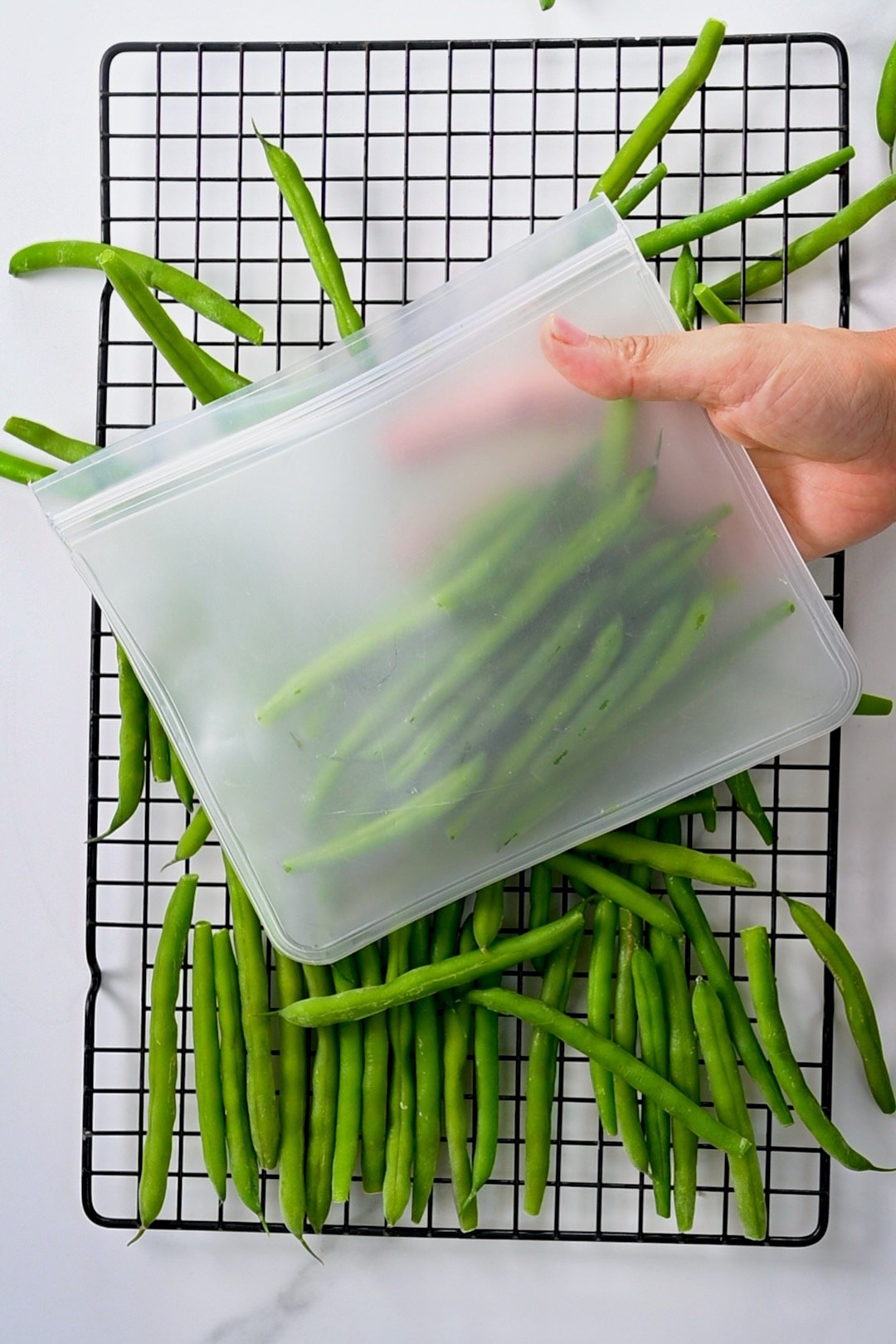
FAQs
Yes, you can. However, the chance of the beans becoming mushy upon thawing/cooking is increased. More so, the color likely won’t be as vibrant.
Some people prefer the texture, though, so feel free to try it.
Blanching green beans (and most fresh produce, in fact) not only cleans the beans but is important to help destroy enzymes that cause a change in the color, flavor, and texture of frozen veggies.
It’s best to only blanch them, as you’ll continue to cook them when heating them. However, you can freeze fully-cooked green beans. Just be prepared for them to be softer/mushier once re-heated.
While they’re not technically poisonous when raw, I don’t recommend it. Unlike sugar snap peas, raw green beans can cause various adverse side effects due to their lectin content, such as bloating, nausea, and even diarrhea.
Aside from the increase in sodium many canned vegetables have, the nutritional value of fresh beans vs. canned is fairly similar. Just note that while canned green beans have a great shelf life, they are usually much softer than fresh and frozen green beans.
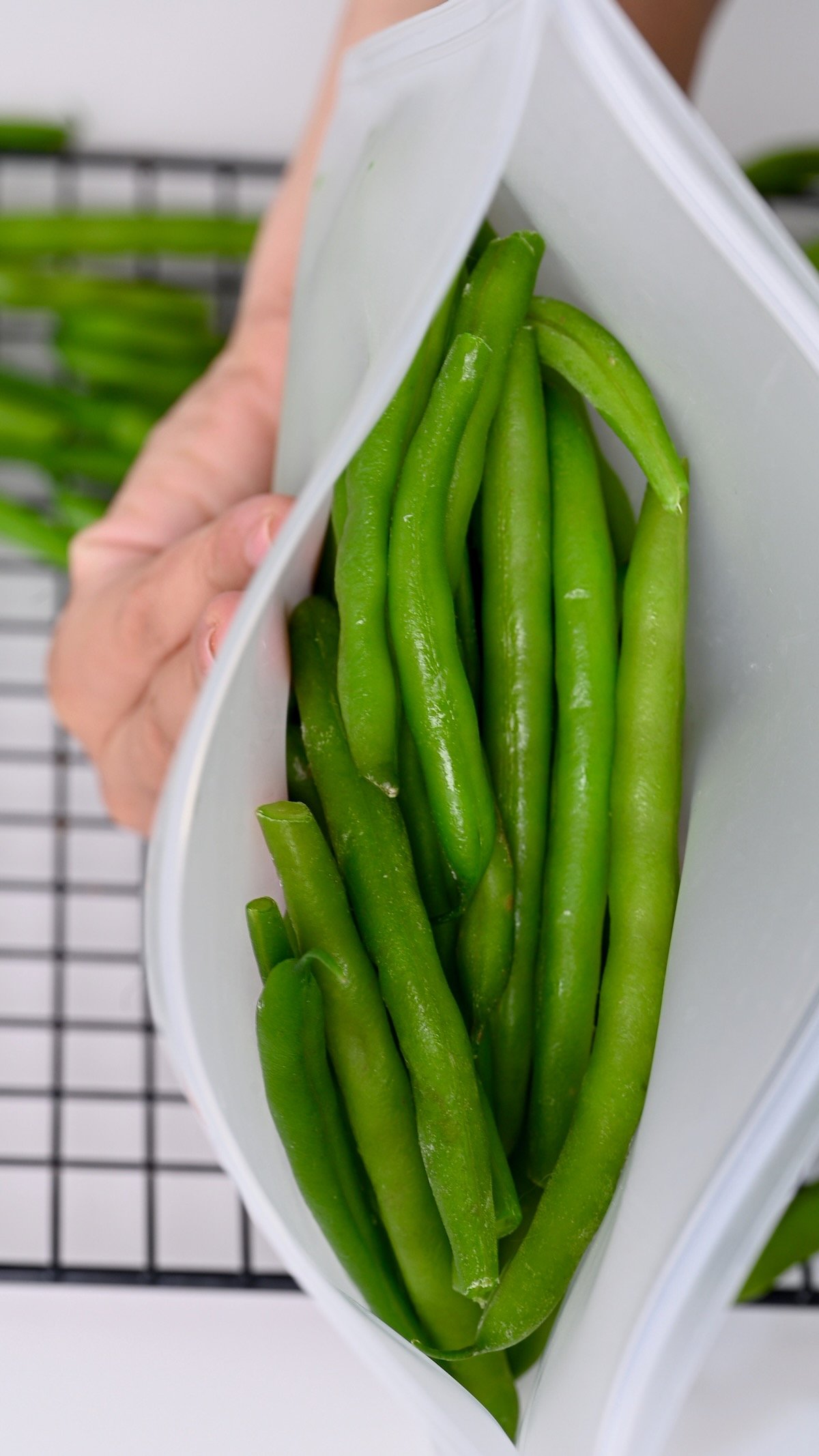
More kitchen how-tos
If you try this method on how to freeze green beans, I’d love to hear your thoughts/questions below. Also, I’d appreciate a recipe card rating below, and feel free to tag me in your recipe recreations on Instagram @Alphafoodie!
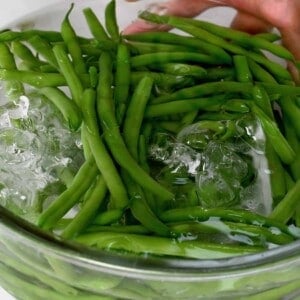
How to Freeze Beans – The Complete Guide
Equipment
Ingredients
- 20 oz green beans or as much as needed
- 1/2 tsp salt
- 1.25 gallon water for blanching the beans (20 cups)
- ice water to cool the beans after blanching
Instructions
Prep the Green Beans
- Rinse the beans in a colander.
- Take a handful (10-15 pods), line up the stem ends, and use a sharp knife to slice off the end (about ¼-1/2 inch). Optionally turn over and repeat on the other side, though it’s not necessary.You could also cut them in half or thirds if you want smaller pieces. I often freeze some whole and some in smaller pieces to use in different recipes.
Blanch the Green Beans
- Bring a large pot of water to a boil and add the salt.The pot size will depend on how much you plan to freeze. Likewise, you can adjust the amount of salt if you’re on a low-sodium diet. Generally, you’ll need around 1 gallon of water per 1 lb. of vegetables.At the same time, prepare the ice bath (a large bowl of ice water).
- Add the green beans to the boiling water, working in batches if necessary.
- Allow them to cook for just 2-3 minutes.
- Use a slotted spoon (or drain them through a colander) to immediately transfer the blanched green beans to the ice bath and allow them to cool for 4-6 minutes to halt the cooking process.
- Remove them from the water and pat dry with a kitchen towel or paper towels.
Freeze the Green Beans
- Spread the blanched green beans on a freezer-safe baking sheet, rack, or board, ensuring they are in a single layer and aren't touching. Then flash freeze the beans until solid (about an hour).
- Transfer the frozen green beans to a freezer-safe Ziplock bag, remove as much air as possible (you can suck it out with a straw for a mock "vacuum pack" effect), and return to the freezer.
Storage Instructions
- I recommend storing the blanched and frozen green beans for between 10-12 months, though for the best taste and texture, eat them within 8 months.Ensure they’re in an airtight environment to avoid freezer burn and maintain the longest shelf life.
Notes
- Use fresh beans: The fresher the produce, the better it will be to preserve.
- Set up your station in advance: The process of blanching, shocking, and freezing green beans goes quickly. Make sure the ice bath is ready and waiting before you blanch the beans.
- Ensure the beans are dry: Otherwise, you’re encouraging ice crystals growth over the frozen beans.
- Save the pod ends: You can use them to make vegetable stock, feed them to chickens, or compost them.
- Label the bags: Use a permanent marker to label the freezer bags with a use-by date, and avoid waste.
Nutrition
Nutrition information is automatically calculated, so should only be used as an approximation.














